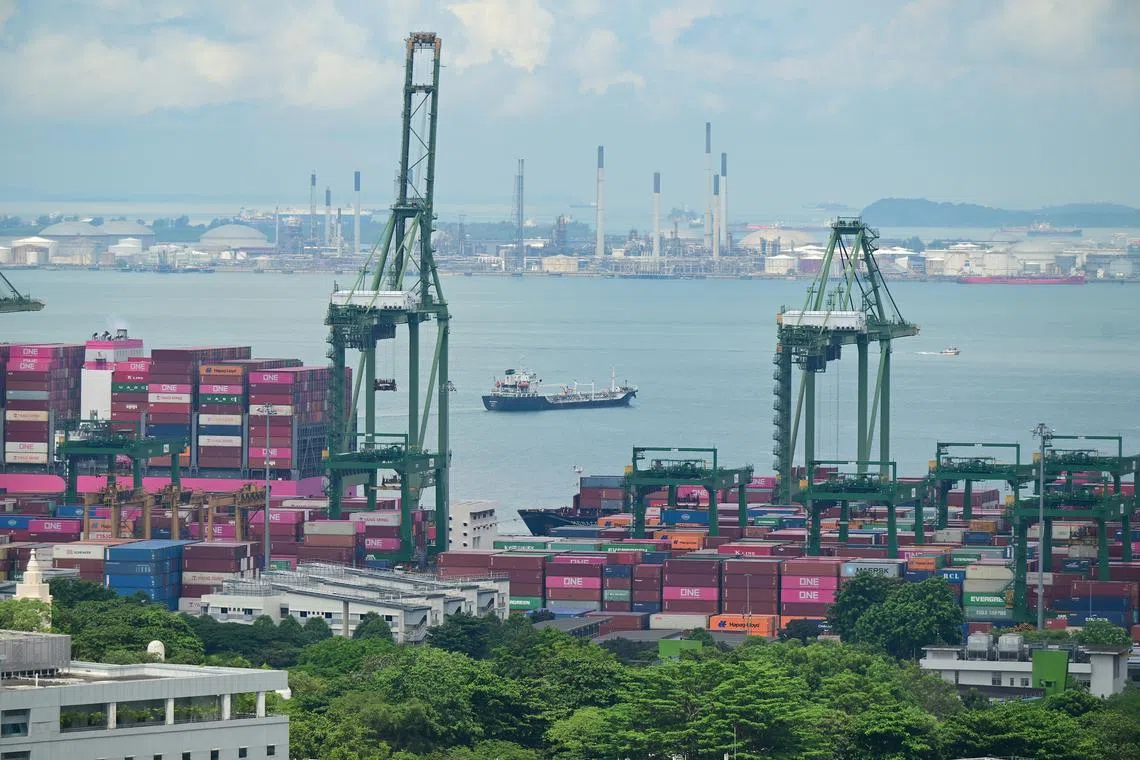Container prices rise in Singapore as demand surges amid shipping, port disruptions
Sign up now: Get ST's newsletters delivered to your inbox

Average container prices in Singapore surged 26 per cent from October 2023 to May, according to new data.
ST PHOTO: AZMI ATHNI
Follow topic:
SINGAPORE – Rising demand and tighter supply sparked by shipping disruptions and port congestion have sent container prices here surging over the past eight months, according to new data.
Average container prices in Singapore rose 26 per cent from October 2023 to May, with a twenty-foot container now costing US$1,211 (S$1,634), up from US$950, noted a June 12 report by online container trading platform Container xChange.
This is also contributing to elevated container leasing rates on key routes, such as from China to the United States, which have doubled since November, and added to the higher freight rates shippers are already paying to move goods around the world.
Container xChange chief executive Christian Roeloffs said the higher prices are due to a shortage of containers in Singapore owing to factors such as vessels arriving unscheduled at key ports, disrupted global shipping schedules and a shortage of container handling capacity.
These disruptions are occurring because container ships are now travelling longer distances around Africa’s Cape of Good Hope to avoid the Suez Canal,
Ships now have less predictable and transparent schedules, leading to longer transit times and mounting congestion in Singapore as vessels queue to discharge their cargo.
The Singapore port handled 16.9 million twenty-foot boxes in the first five months of 2024, which is up 7.7 per cent over the same period in 2023, noted the Maritime Port Authority of Singapore.
Mr Roeloffs said congestion here is anticipated to extend well into June and potentially longer as demand rises and capacity continues to face pressure.
Shipping line Maersk estimated recently that there has been a 15 per cent to 20 per cent reduction in available industrywide capacity in the second quarter of 2024.
Meanwhile, demand for container space is rising faster than expected as more retailers opt to restock inventories early to avoid higher freight rates and bottlenecks closer to the year-end holiday season.
S&P Global Market Intelligence noted that total US seaborne imports of containerised freight grew by 11 per cent year over year in May, following an 8 per cent increase in April and an 11 per cent rise in the first quarter of 2024.
Aside from a 10 per cent year-on-year rise in US imports of consumer discretionary products such as sneakers and toys, there was also a 10 per cent uplift in shipments of consumer staples such as household and personal care products. Imports of industrial materials and electrical components also rose.
Analysts add that concerns around US tariffs are also a driver for the earlier-than-usual peak season, after US President Joe Biden said in May that tariffs on US$18 billion worth of US imports from China will be implemented
On June 12, the European Commission announced that it would impose provisional tariffs that would result in Chinese carmakers facing additional duties of as much as 38 per cent,
Mr Roeloffs said that “persistent congestion at a key hub like Singapore can impact global trade flows, affecting the movement of goods between Asia, Europe, and the Americas”.

